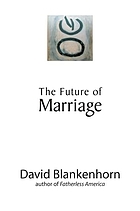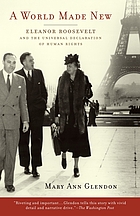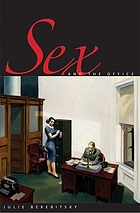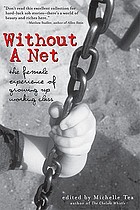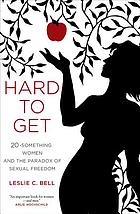 note: this post was originally written to be cross-posted at the family scholars blog. since I drafted it, the family scholars blog has gone abruptly on hiatus, so this review will only appear here at the feminist librarian.
note: this post was originally written to be cross-posted at the family scholars blog. since I drafted it, the family scholars blog has gone abruptly on hiatus, so this review will only appear here at the feminist librarian.Several weeks ago, when I reviewed Donna Freitas' book, The End of Sex, I linked out to an interview with Leslie C. Bell, author of the newly-released study Hard to Get: Twenty-Something Women and the Paradox of Sexual Freedom (University of California Press, 2013). Like Freitas, Bell studies the sexual habits of humans. A sociologist and psychoanalyst, Bell became interested in modern relationship dynamics while working with clients in private practice in the Bay Area. Driven by a desire to better serve the women she counseled, Bell set out to explore how today's twenty-something women navigate sexual relationships -- from casual sexual encounters to long-term partnerships. Through extensive and multiple qualitative interviews with a diverse group of women*, Bell sought to understand how and why women made the choices they did about forming, maintaining, and ending sexual relationships.
Hard to Get is, overall, diagnostic rather than prescriptive. It seeks to identify the interviewees common struggles and strategies for addressing those struggles -- both strategies that increase her subjects' well-being and strategies that seem ultimately counterproductive. She sorts her interviewees by three relationship strategy types: the "sexual woman," who has prioritized sexual self-knowledge and pleasure, but resisted forming interpersonal attachments; the "relational woman," who seeks to maintain her intimate relationships, at times even at the expense of her sexual satisfaction; and finally "the desiring woman," who has (sometimes after one of the first two strategies failed) arrived in a place where she feels able to be an independent, sexually-assertive being and capable of intimate relationships without loss of individual identity or desires.
One of the most interesting aspects of Hard to Get is that Bell's "desiring women" are, for the most part, women with queer sexual histories or identities. She suggests, in her concluding chapter, that part of the reason queer women in her sample expressed a greater sense of well-being and relationship satisfaction was that their intimate relationships were less freighted with gender-based assumptions about what each partner wanted or needed. She makes a passionate plea for straight couples, as well, to pull away from gender-based assumptions about what "women" and "men" want in a partner, and instead approach one another as individual humans.
I actually noticed another commonality among the "desiring women" that had little to do with their adult sexual identities: many of them came from homes in which parents and/or step-parents modeled a great deal of gender independence -- that is, the ability to draw on human capacities, whether "feminine" or "masculine," which best served them in the situation to hand. Single fathers, for example, who knew their way around the kitchen and nurtured their daughters, and mothers who worked in gender-atypical employment. I suspect that this modeling, perhaps even more than the individuals sexual flexibility, might account for the "desiring" women's resilience and adaptability -- their willingness to meet a relationship partner on individual, rather than rigidly gendered, terms.
One of my fears about this book was (and remains) that it perpetuates the pervasive and sexist assumption that relationship creation and maintenance is "women's work," that women suffer disproportionately in the absence of relationships, and that we should focus on women when asking questions about relationship success and failure.
On the one hand, I can't fault Bell for choosing to focus her energies on women; we all have to create boundaries around our research topics in order to say anything meaningful about the data we collect. I think she does an excellent job of centering women without blaming or victimizing them. Bell's subjects actively create and narrate their own lives, even maintaining agency in situations where their choices are severely constrained (such as when they experience sexual assault). This saves the volume from being yet another hand-wringing polemic about "girls these days." Indeed, I really appreciated Hard to Get's feminist sensibility. Bell identifies as a feminist in her introduction, and refuses -- unlike many others who have explores this subject -- to play the "let's blame feminism!" game even when she is looking at the ways changing gender role expectations and sexual opportunities create new challenges.
On the other hand, time and time again these women seem very much alone in their quest for mutuality. The men (in the lives of those who make connections with men) don't appear to be aware of their partner's struggles, engaged in finding solutions, or even. At the end of Hard to Get we aren't left a whole lot wiser about where these women, at least the hetero-minded among them, might find men with whom they could successfully connect. I find myself wondering, once again, about the emotional and relational lives of men -- and how their experiences fit within this puzzle. As long as straight men remain (by their own volition and/or by neglect) outside of the relationship discussions, it seems doubtful that much progress will be made resolving hetero relationship struggles.
In my last book review, folks at FSB appreciated my question, "Who would I recommend this book to?" So here is my response for Hard to Get: Bell's study should be required reading for anyone who has a scholarly or personal interest in how modern Americans are forming sexually-intimate relationships (and how we might do so more successfully). Bell's urge for us to move forward instead of backward in search of solutions to our relationship struggles is an important counterpoint to more conservative voices. Even if you end up disagreeing with her conclusions, her participants offer us valuable insights into how adult (not college-age) women think and feel about, and how they do, sexual relational intimacy.
*While all from roughly the same age cohort, and largely professional-class women in the Bay Area when they are interviewed by Bell, the participants are about half white and half non-white, half straight and half non-straight, and grew up in a range of different geographical and socioeconomic circumstances. This mix was a deliberate decision on Bell's part and, I think, strengthens her study immeasurably.
